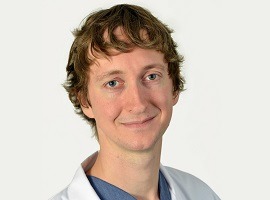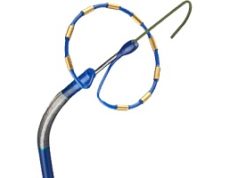 In a late-breaking session at the European Heart Rhythm Association annual congress (EHRA; 17–19 March, Lisbon, Portugal), Jason Andrade of Vancouver, Canada presented the results of the CIRCA-DOSE study, a randomised clinical trial designed to evaluate the safety and efficacy of second-generation cryoablation versus contact-force irrigated radiofrequency catheter ablation for atrial fibrillation, as well as short (two-minute) versus standard (four-minute) cryoapplication exposure.
In a late-breaking session at the European Heart Rhythm Association annual congress (EHRA; 17–19 March, Lisbon, Portugal), Jason Andrade of Vancouver, Canada presented the results of the CIRCA-DOSE study, a randomised clinical trial designed to evaluate the safety and efficacy of second-generation cryoablation versus contact-force irrigated radiofrequency catheter ablation for atrial fibrillation, as well as short (two-minute) versus standard (four-minute) cryoapplication exposure.
Andrade presented the conclusion that pulmonary vein isolation performed by advanced generation cryoballoon or by contact-force guided radiofrequency results in comparable freedom from recurrent atrial arrhythmia.
In addition, he noted the “stark contrast” in the definition of success between the primary endpoint, defined as time to first atrial arrhythmia event, and the reduction in atrial fibrillation burden, which “highlights the need to reappraise the optimal atrial fibrillation ablation study endpoint.” His final conclusion was that efficacy is not compromised by using a shorter cryoablation duration.
Freedom from any atrial tachyarrhythmia (atrial fibrillation [AF], atrial flutter [AFL], or atrial tachycardia [AT]) after a single ablation procedure—the primary outcome of the study—revealed comparable event-free survival rates between contact-force guided radiofrequency (CF-RF; 53.9%), 4-minute cryoapplication (CRYO-4; 52.2%) and 2-minute cryoapplication (CRYO-2; 51.7%).
Andrade detailed that the trial was conducted in eight centres across Canada and involved 353 patients in total. At a median of 73 days days prior to ablation, 353 patients were implanted with Reveal LINQ in order to determine their baseline AF burden. Six patients did not undergo ablation and one patient was withdrawn. At 7–14 days prior to ablation, 346 patients were randomised to three different study groups: a CF-RF group (115 patients), a CRYO-4 group (115 patients) and a CRYO-2 group (116 patients).
In the CF-RF group, 115 patients completed the study. There was only one protocol violation in this group and zero deaths, withdrawals or patients lost to follow up. In the CRYO-4 group, 114 patients completed the study, with one protocol violation, one withdrawal, and zero deaths or losses to follow-up. In the CRYO-2 group, 114 patients completed the study, one patient died and one withdrew from the study. There were zero protocol violations or patients lost to follow-up in this group.
The primary endpoint of the study was the time to first recurrence of any (symptomatic or asymptomatic) atrial tachyarrhythmia (AF, AFL, or AT) between days 91 and 365 post ablation, or a repeat ablation procedure between days zero and 365 post ablation. The endpoint of any AF after a single ablation procedure was chosen because the investigators were performing a comparative technology evaluation.
Key secondary endpoints were defined as the time to first recurrence of symptomatic atrial tachyarrhythmia between days 91 and 365 days after ablation, arrhythmia burden, the proportion of patients requiring a repeat ablation procedure because of documented recurrence of symptomatic AF/AFL/AT and serious periprocedural complications.












